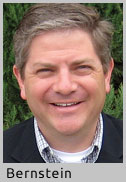Consulting Services: David Bernstein, Turn-Key Industrial Engineering Services, Charlottesville, Va.

Most people think of healthcare linen as the primary sharps concern because of the serious health issues that can arise from laundry workers being stuck by needles or cut by other sharp medical devices, but those of you who operate non-healthcare laundries should also be concerned with how the intrusion of these items can present a danger and affect the smooth flow of production through your plant.
Do all that you can to eliminate the intrusion of sharps into soiled linen before that linen reaches your loading dock. Your sales and service teams need to partner with customers to provide education for their management and employees so that they can put the proper controls in place. Taking the time when a new customer comes on board to provide training and education for their team can go a long way toward ensuring the safety of your workers and the uninterrupted flow of goods through your plant.
In the healthcare realm, work with your customers’ infection control and/or environmental departments to ensure that they are using safer medical devices with the latest engineering controls (e.g. sharps containers, needleless systems, self-sheathing needles, etc.). Some customers may initially resist adopting some of these devices based on cost, but having a frank conversation with them about the cost of each exposure may help them to come around.
Those of you processing industrial and non-healthcare linen should be having the same kind of ongoing dialogue with your customers, albeit from a slightly different angle. You may need to approach the topic from an economic perspective. Explain how a sharp knife can injure a production worker, how a fork can puncture the diaphragm of a press extractor and shut down your production (for hours or days), how a screwdriver can damage a washer-extractor or a dryer, etc.
Of course, any of you who run a laundry that processes food and beverage linen have also seen silverware and cooking tools end up in these facilities, and I would suggest that you explain how much money is being wasted on items that end up in your soil room rather than in their dishwashers.
Cultivate an attitude of zero tolerance toward the appearance of sharps in your customers’ soil. It has become common practice in healthcare laundries to, as a part of a written exposure plan, log the appearance of sharps and other foreign objects in soiled laundry and provide a monthly report to your customers. I would argue that you should take this practice further.
Work with your team and your customers’ risk management and infection control departments to develop a list of priority items that, if found among your linen, trigger an immediate call to the customer and an investigation into how the item got into your soil room.
Some laundries charge customers for each foreign item found among their soil, with higher amounts charged for more dangerous items. This type of negative reinforcement can turn a customer off of your service, so I recommend taking a more positive approach. Reward employees who find, report and properly handle sharps, and consider an annual award to those customers who eliminate or reduce the number of sharps and other foreign items sent to your laundry.
In many laundry processing facilities, soil-sort workers are considered the first line of defense against the intrusion of sharps and other foreign objects. With time, constant vigilance, strict monitoring of items that come into your laundry, and innovative partnering strategies, you should be able to achieve continuing reductions.
Uniforms/Workwear Manufacturing: Scott Delin, Superior Uniform Group, Seminole, Fla.

Every time a laundry discovers sharps in the soiled linen, the occurrence should be documented and reported immediately to the healthcare facility. Prepare and present an incident report to the appropriate department. By physically showing the sharps that came back in the soiled linen, it might be possible to identify the specific department from where they came and prevent future occurrences.
Schedule ongoing educational sessions with individual departments as needed. In an effort to ensure that facilities properly dispose of sharps, laundries should provide their healthcare facilities with collection containers and proper signage at all collection points. These safety measures will result in a reduced amount of sharps coming back to laundry facilities in the soiled linen.
Check back Tuesday for the third and final part!
Have a question or comment? E-mail our editor Matt Poe at [email protected].
